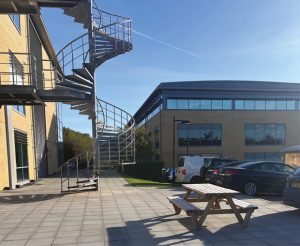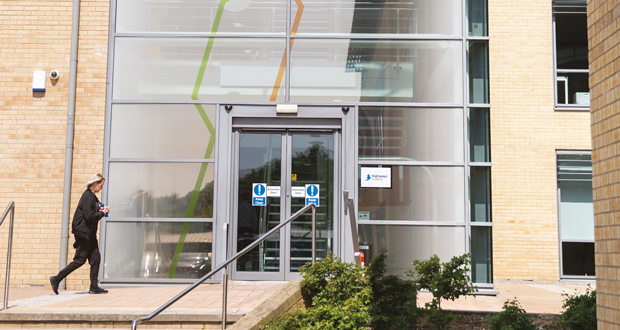National Highways’ Brunel House carbon load shifting initiative illustrates Amey’s AI-Driven approach and its key lessons for sustainable building management in the public sector
In an era marked by increasing demands on public services and ever-tightening budgetary constraints, public sector organisations are under more pressure than ever to deliver value while simultaneously fulfilling ambitious regulatory and environmental requirements. Nowhere is this truer than in the management of public buildings, with assets that must be maintained, heated, cooled and powered efficiently, all while remaining comfortable and accessible for users. The successful trial of a carbon load shifting initiative at National Highways’ Brunel House, led by Amey in partnership with National Highways, Grid Edge, and BMSi, showcases both the transformative potential of artificial intelligence in building management and the importance of strategic, data-driven action.
CHALLENGES FACING THE PUBLIC SECTOR
Public sector organisations in the UK, like their counterparts across the world, are grappling with multiple, sometimes competing priorities. On one hand, they face the rising cost of energy, constrained budgets, and the requirement to reduce their carbon footprints. The UK Government, for example, has set a legally binding target to achieve net zero greenhouse gas emissions by 2050, alongside interim ambitions such as reducing public sector building emissions by 50 per cent by 2032 compared to 2017 levels. On the other, there is an imperative to provide reliable, high-quality services to the public, ensuring that buildings are not just functional but welcoming and comfortable.
Amidst these challenges, many local authorities and agencies have set themselves ambitious carbon reduction targets, reflecting both government policy and the expectations of the communities they serve. Achieving these goals within existing budgetary and operational constraints demands ingenuity, innovation, and the willingness to embrace new technologies – a context in which the Brunel House Carbon Load Shifting initiative offers timely lessons.
AI-POWERED CARBON LOAD SHIFTING
The trial conducted at Brunel House in 2025 revolved around a deceptively simple idea: by intelligently timing energy consumption to coincide with periods when the UK’s national grid is supplied primarily by renewables (low carbon intensity), and reducing usage when fossil fuels dominate, significant reductions in both cost and emissions became possible.
To coordinate and implement this strategy, Amey installed E60+, an innovative, AI-driven energy tool. This system worked in tandem with Grid Edge’s sensor technology to monitor and analyse real-time energy usage throughout the building. By learning the nuances of how appliances and systems within Brunel House consumed energy, E60+ identified opportunities to shift certain loads away from periods of high grid carbon intensity.
E60+ is designed to work with whatever systems are already in place- whether it’s a legacy building management setup or recently installed IoT devices.
What’s important is that innovation happens intentionally. Any recommendations the AI makes are reviewed by operational site teams; giving it that human interaction which ensures nothing compromises comfort or operations. As adjustments roll out, E60+ keeps monitoring, ready to dial things back if needed and maintain the balance between efficiency and user experience.
 Unlike the usual energy saving tools that rely on new equipment, E60+ focuses on doing more with what’s already there. By turning raw data into clear, practical steps, it gives building managers and decision makers what they need to make real progress on carbon and cost. This kind of approach is well suited to the reality of public sector estates, where sustainability targets are ambitious but the path to net zero needs to be practical, inclusive, and grounded in everyday choices.
Unlike the usual energy saving tools that rely on new equipment, E60+ focuses on doing more with what’s already there. By turning raw data into clear, practical steps, it gives building managers and decision makers what they need to make real progress on carbon and cost. This kind of approach is well suited to the reality of public sector estates, where sustainability targets are ambitious but the path to net zero needs to be practical, inclusive, and grounded in everyday choices.
Getting E60+ up and running at Brunel House was refreshingly straightforward. While there was the usual challenge of pinning down the power ratings for every bit of equipment, having detailed site plans helped the team quickly create a digital twin and find their feet with the new system.





